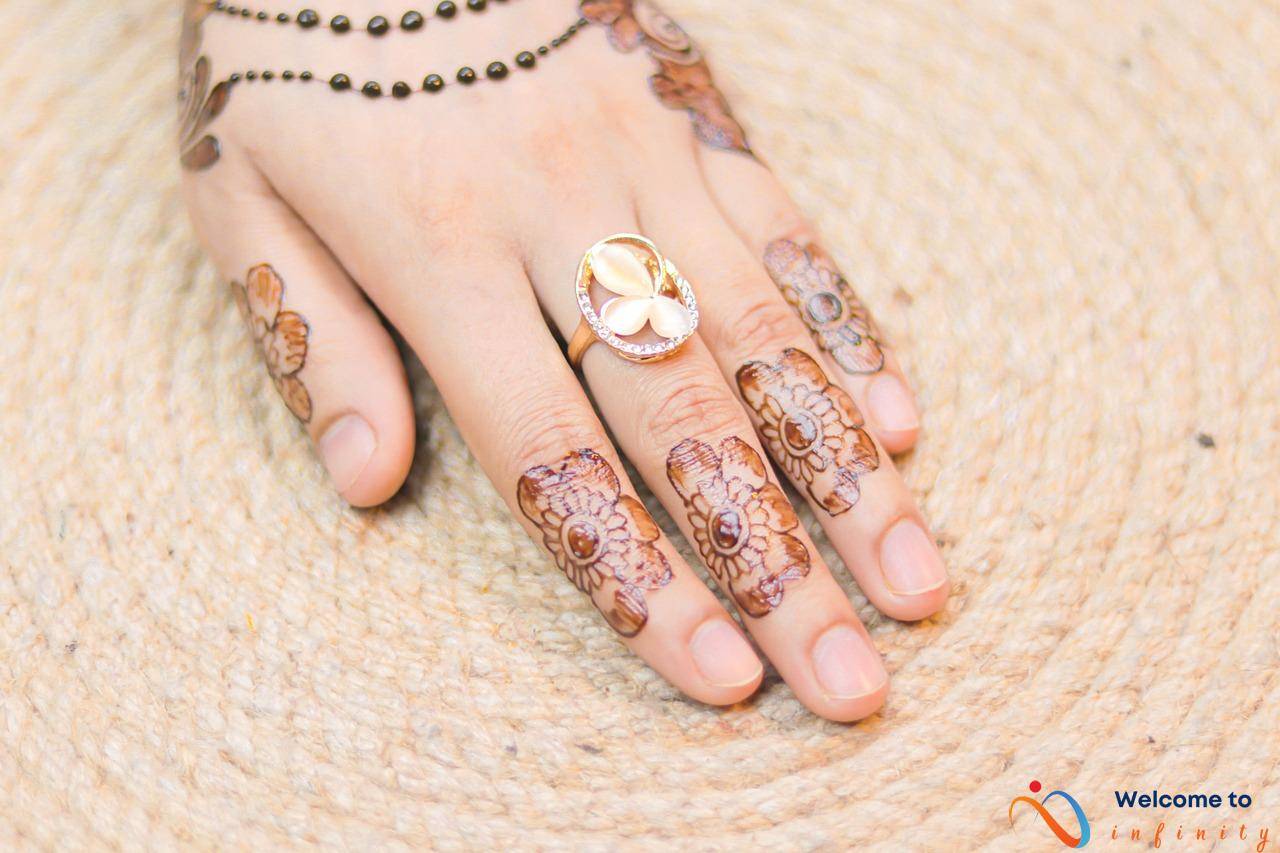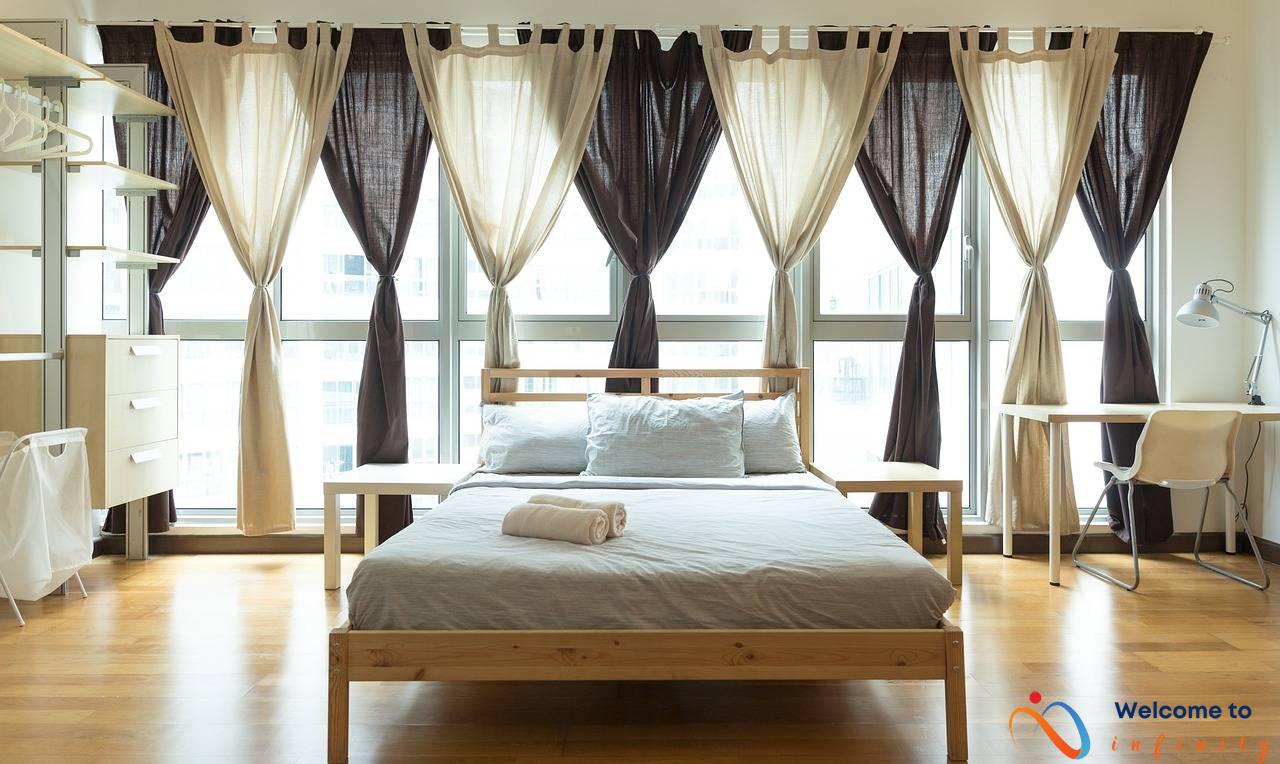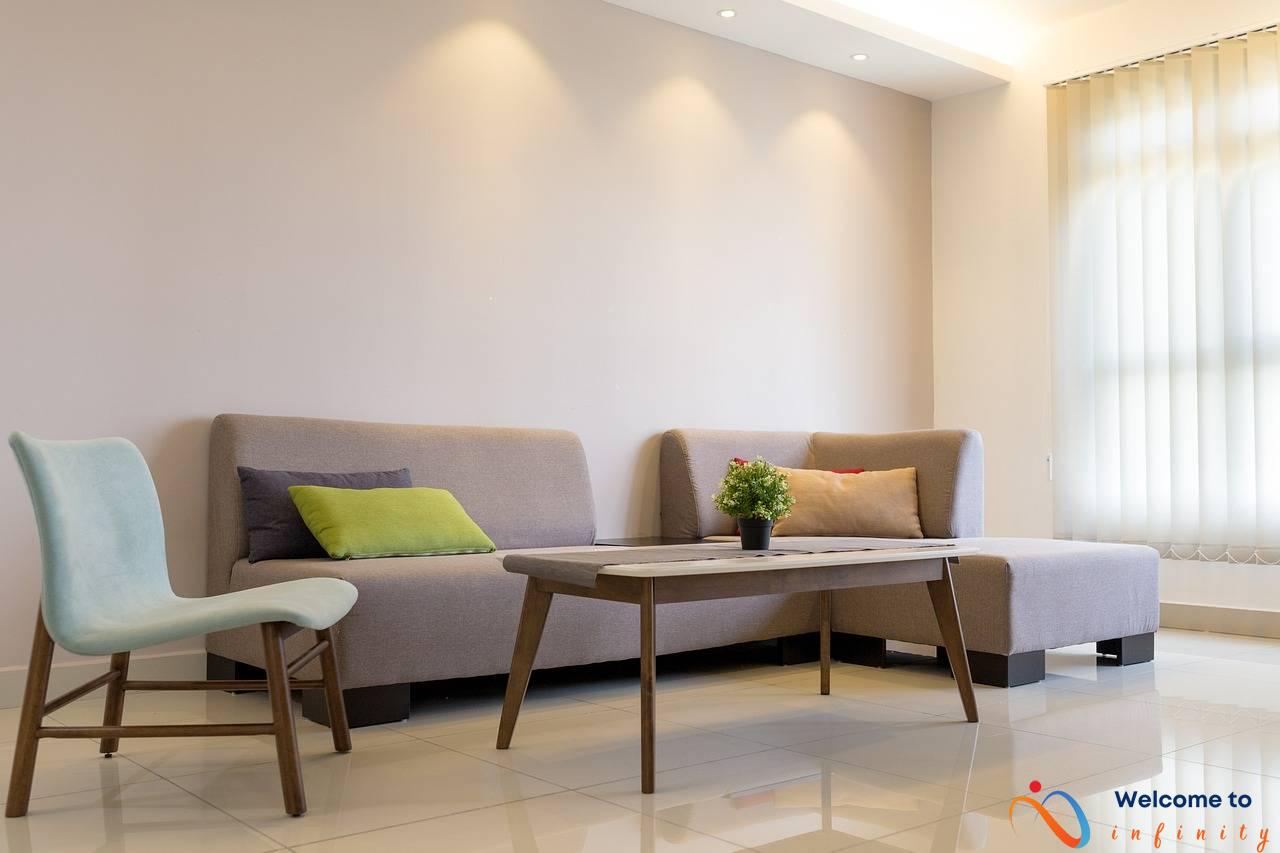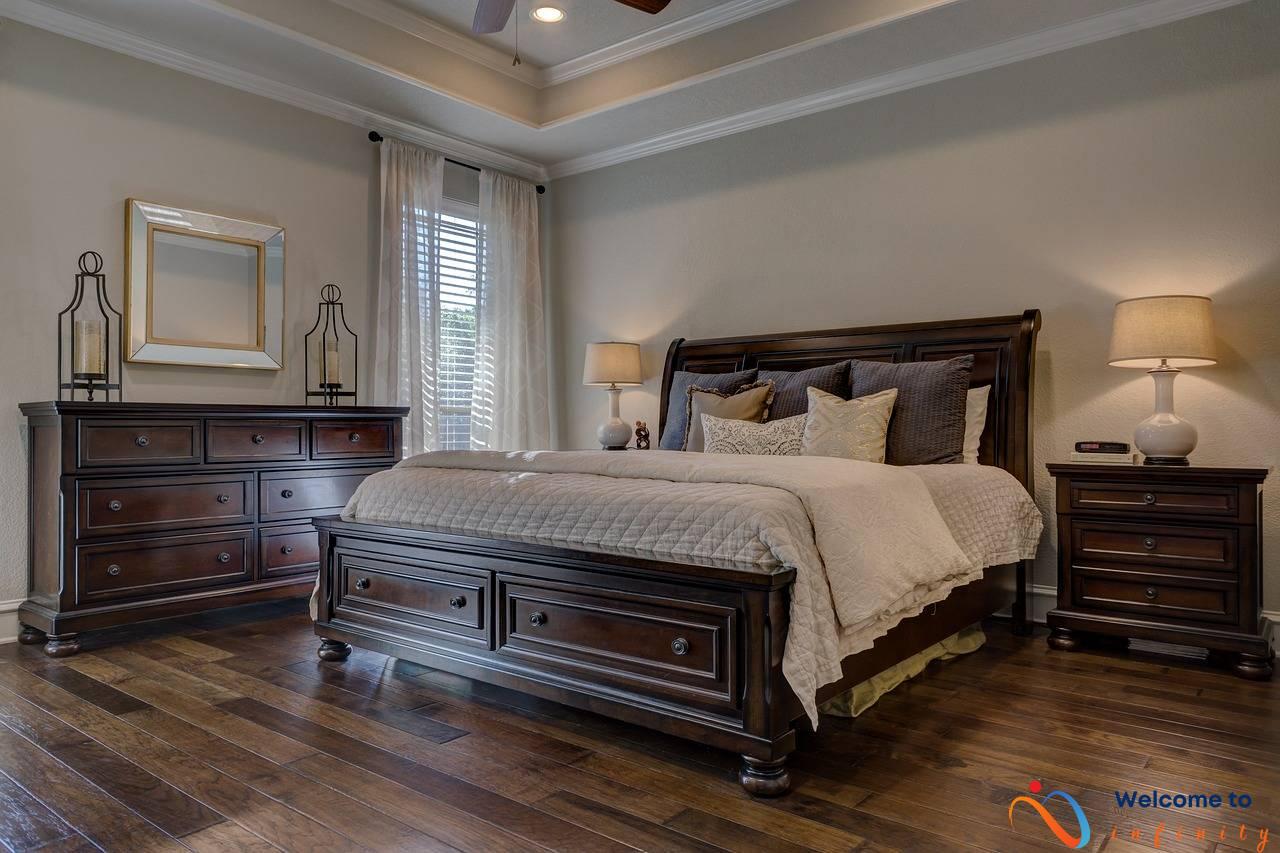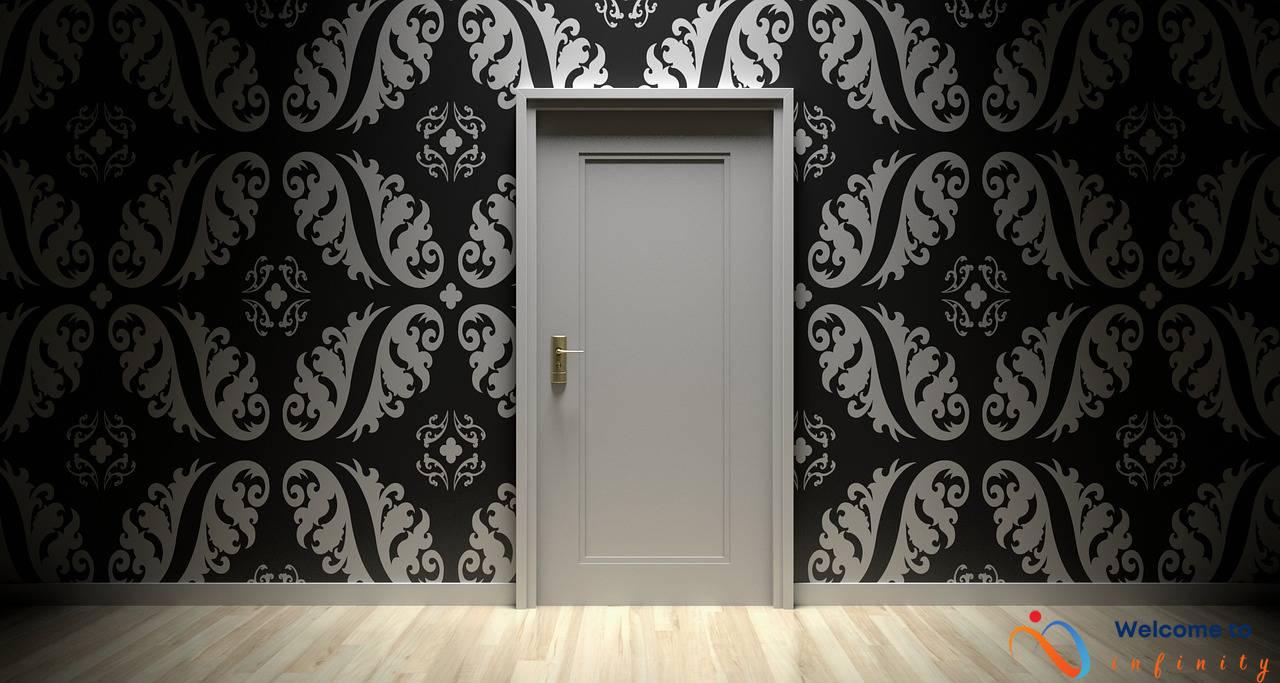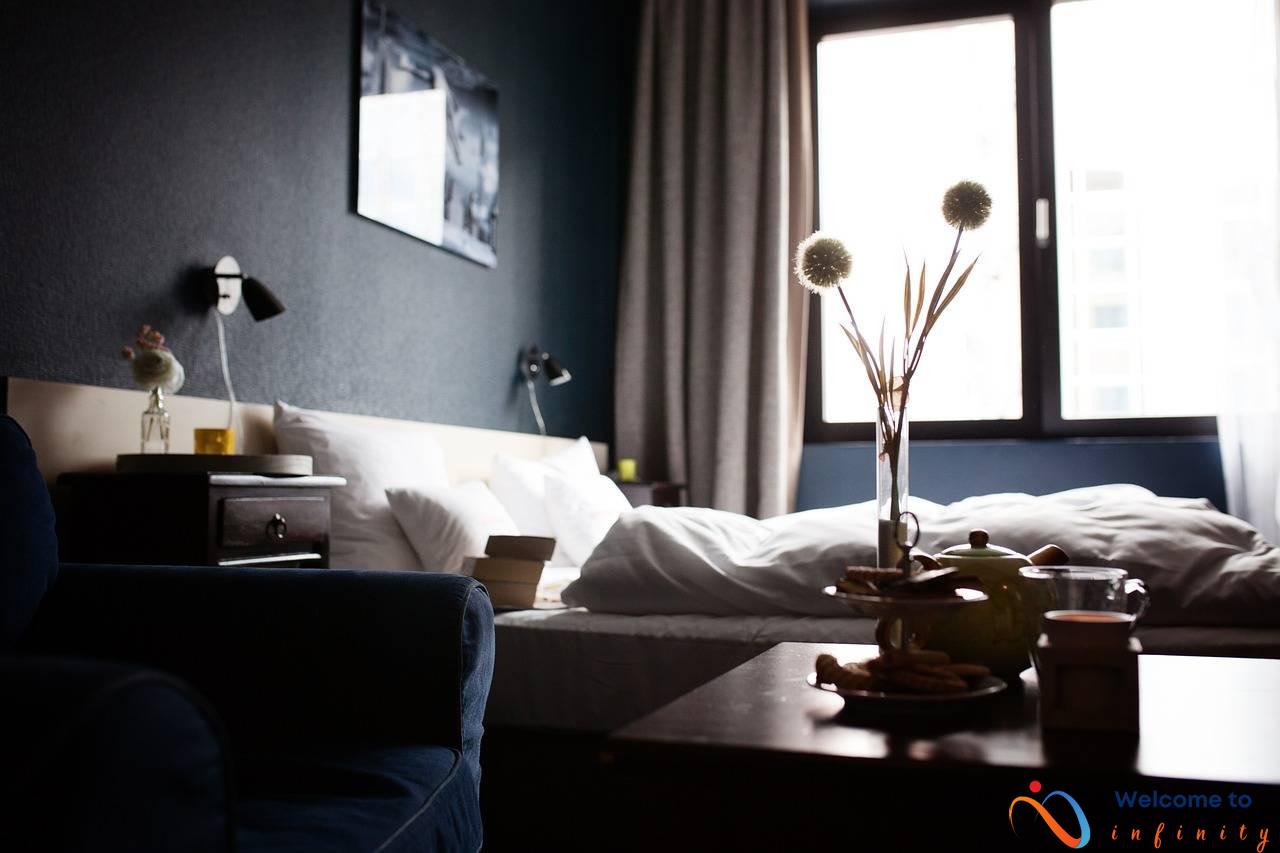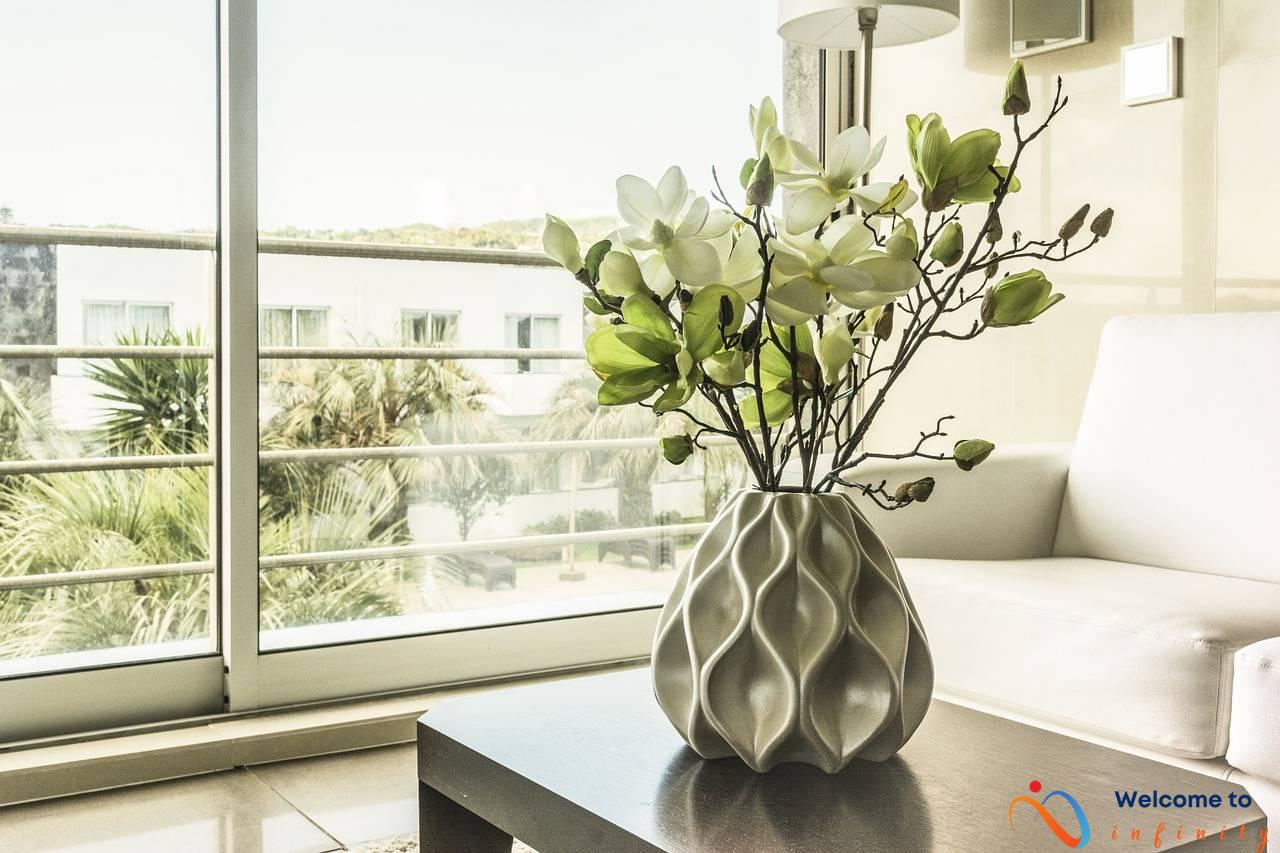Are you looking to add a modern touch to a patterned room? Adding contemporary art is a great way to freshen up your space and create a unique design that reflects your personal style. But how can you effectively blend art with existing patterns without creating a chaotic aesthetic?
Firstly, you need to master the art of mixing. When selecting artwork for a room with patterns, it's important to consider the size and style of the piece. A large, bold canvas can complement a room with busy patterns, while a small piece can provide a subtle touch of modernity that balances out the busyness of patterns. The key is to create a cohesive design that doesn't overwhelm the space.
Another important factor to consider is color coordination. When selecting artwork, choose pieces that complement the colors in your patterned room. You can even use the color wheel to help you find complementary colors that will create a harmonious balance. Additionally, you can also use frames to tie in the colors of the art with the existing decor.
When it comes to framing choices, consider using a neutral frame for bold, colorful artwork and a statement frame for more muted pieces. Matting can also create visual interest and balance in your art display, so don't be afraid to experiment with different matting options to create a cohesive look. And don't forget to consider contrast vs. complement – sometimes, seeking contrast can create an eye-catching focal point in your room, while other times you may want to look for complementing art styles that blend seamlessly with the patterns in the space.
Ultimately, hanging and placement is key to ensuring your artwork has optimal impact in a patterned room. Consider creating a focal point with a bold and colorful piece, or arranging multiple pieces in a thoughtfully curated display. And don't hesitate to mix different styles of artwork to create a unique and modern take on patterned room design.
The Art of Mixing
When it comes to adding contemporary art to a room with existing patterns, a key skill is the art of mixing. Here are a few tips on how to blend art with patterns for a cohesive design:
- When selecting art, choose pieces that reflect the same color scheme as your patterns. This helps create a sense of unity in the design.
- Consider the visual weight of your patterns. If your room has bold and busy patterns, opt for artwork that is more subtle and minimalist to create balance.
- Don't be afraid to mix and match patterns in your art display. Just be sure that your artwork patterns don't clash with your existing decor patterns.
In addition to following these tips, it's important to have an eye for what works well together. Take the time to experiment with different combinations of art and patterns until you find the perfect mix for your room.
Color Coordination
If you have a patterned room, selecting artwork that complements the colors of the room can make a big difference in creating a cohesive design. One approach is to choose artwork that includes colors already present in the patterns of the room. This can help tie everything together and create a harmonious look.
Another strategy is to select artwork that has complementary colors to those in the room. Complementary colors are opposite each other on the color wheel, such as blue and orange or purple and yellow. These pairings can create a dynamic visual impact, but be careful not to overdo it. Too much contrast can create a jarring effect, so it's important to find a balance.
You can also consider using a neutral color palette for your artwork. This is a safe option that won't clash with the colors of the room, but it can also be a bit bland. One way to add interest is by selecting artwork that has texture or visual depth. This can help create visual interest and balance when paired with patterned decor.
Finally, don't forget about the frame when coordinating colors. A frame can either enhance or detract from the artwork and the room's colors. Consider the color and finish of the frame when selecting artwork, and choose one that complements the colors and style of the room.
Overall, selecting artwork that complements the colors of a patterned room can be challenging, but with a careful eye and these strategies, you can create a cohesive and visually appealing design.
Framing Choices
When selecting frames for your contemporary art pieces in a room with existing patterns, there are a few key considerations to keep in mind. First, you want to choose frames that enhance the artwork and complement the colors in the room. Look for frames that draw attention to the art without overwhelming it, and consider the style of the artwork when selecting a frame. For example, a minimalist modern piece might benefit from a sleek, simple frame, while a more ornate traditional piece might require a more decorative or ornate frame.
In addition to enhancing the artwork, you also want to ensure that the frames complement the existing decor in the room. Consider the style and color of your furniture, curtains, and other decorative elements, and choose frames that tie these elements together. For example, if your room has a lot of warm, earthy tones, you might opt for frames with a similar color palette, whereas a room with cooler, more neutral tones might benefit from frames with metallic or jewel-toned accents.
When it comes to matting, keep in mind that it can be a great way to add visual interest and balance to your art display. A neutral or contrasting mat can help draw attention to the artwork, while a mat in a similar color to the wall can help the artwork blend seamlessly into the room. Consider experimenting with different matting options to find the best look for your space.
Overall, choosing the right frames for your contemporary art pieces is all about balance and harmony. By selecting frames that enhance the artwork while complementing the existing decor, you can create a cohesive and visually stunning room that showcases your unique sense of style.
Matting Options
When it comes to displaying art in a patterned room, matting can be a great tool for creating visual interest and balance. Here are some tips on how to use matting effectively:
- Choose a mat color that complements the dominant colors in your patterned room. This will help tie the artwork in with the decor.
- Consider using multiple mats to create depth and dimension in your art display.
- Experiment with different mat sizes to find the perfect balance between the artwork and the surrounding space.
In addition to color and size considerations, the thickness of the mat is also an important factor to consider. A thicker mat can help draw attention to the artwork and create a more dramatic effect. However, a thin mat may be a better choice for smaller pieces of art or for a more understated look.
Overall, using matting can be a great way to enhance your art display and create a cohesive design in a patterned room. Play around with different combinations to find the perfect balance for your space.
Contrast vs. Complement
When incorporating modern art into a patterned room, it's important to strike the balance between contrast and complement. Contrast can be achieved by selecting artwork that stands out from the patterns in the room, creating visual interest and drama. On the other hand, complementing art styles can blend seamlessly with the existing patterns, creating a cohesive and harmonious design.
Consider the mood you want to create in the room when deciding whether to seek contrast or complement. If you want to create a bold and edgy vibe, contrast can be effective. Try selecting artwork with bright colors or graphic shapes to offset the patterns in the room. If you're looking for a more relaxed and tranquil mood, complementing art styles can work well. Select artwork with similar colors or textures to the patterns in the room to create a soothing atmosphere.
Another important consideration is the size and placement of the artwork. Contrast can be achieved by selecting a large piece of artwork that dominates the space, while complementing art styles can work well in grouped displays of smaller pieces. Don't be afraid to mix styles and mediums to create a unique and personalized art display.
When choosing frames for your artwork, consider whether you want them to contrast or complement the existing decor. Black or metallic frames can create contrast and add a modern touch, while wooden frames can blend seamlessly with the patterns in the room. Matting options can also be used to create contrast or balance in your display. Experiment with different combinations until you find the perfect fit.
Ultimately, when it comes to contrast vs. complement in art and patterned rooms, there is no right or wrong answer. It depends on your personal style and the mood you want to achieve in the space. With these tips in mind, you can confidently select artwork that will enhance your patterned room for a fresh and modern look.
Hanging and Placement
Proper placement and hanging of artwork are crucial in achieving a cohesive design in a room with patterns. Here are some best practices to keep in mind:
- Hang artwork at eye level – Artwork hung too high or low will appear disconnected from the rest of the room.
- Consider the balance of the room – Place artwork in a way that balances the patterns in the room. For example, if there is a bold pattern on one wall, place a piece of art with a similar color or pattern on the opposite wall.
- Use appropriate hardware – Make sure the hardware used to hang the artwork can support its weight and is appropriate for the type of wall material.
- Consider the size and shape of the artwork – A large piece of artwork may be the focal point of the room, but it should still be placed in a way that complements the surrounding patterns. Consider using smaller pieces to complement a larger piece, or grouping smaller pieces together for a statement art display.
In addition to these best practices, think outside the box when it comes to placement. Try hanging artwork in unexpected places, such as above a doorway or on the ceiling, for a unique touch. Remember, the goal is to achieve a harmonious blend of patterns and modern art for a fresh, contemporary look.
Art as a Focal Point
Incorporating bold and colorful art is a great way to draw the attention of your guests and create a focal point in a patterned room. It's important to find artwork that complements your existing decor and makes a statement. Here are some ideas to incorporate art as the centerpiece of your patterned room:
- Large-scale pieces: Consider a single large-scale piece of art to make a bold statement. A piece that incorporates colors from your existing patterns can tie the room together.
- Gallery walls: A collection of framed artwork grouped together can create a stunning visual display. Use frames that complement each other and match the decor in your room.
- Mixed media: Incorporating mixed media pieces, such as sculptures or textiles, can add texture and depth to your room's design.
When selecting art as a focal point, think about the placement and how it can complement or contrast with your existing patterns. Remember, the focal point should be eye-catching but not overwhelm the space. Play around with different arrangements until you find the perfect balance.
Grouped Displays
Grouped displays are an excellent way to showcase multiple pieces of contemporary art in a patterned room while still maintaining a cohesive look. When arranging artwork together, it's crucial to consider the placement and groupings to create a visually stunning display of art.
One strategy for creating a group display is to use similarly styled artworks with a common theme. This theme can be a consistent color scheme, a particular subject matter, or a shared artistic style. By selecting art pieces with complementary styles, such as both abstract works or atmospheric landscapes, you can create an aesthetically pleasing display.
Another technique for arranging multiple pieces of contemporary art is by using a grid system. A grid system organizes artwork in an orderly fashion, creating a neat and balanced display. A simple grid system can be created by hanging the artwork in a straight line or by arranging square pieces in a square pattern. Alternatively, you can create a clustered grid by using odd shapes and sizes of artwork arranged tightly together.
Tabletop groupings are another way to create interesting group displays. By arranging framed pieces of artwork of varying sizes on a tabletop, you can create a unique display that adds visual interest and acts as the centerpiece of a patterned room.
When arranging grouped displays, it's essential to ensure that each piece of artwork is visible and not obscured by other elements. You should also consider the spacing between the pieces, with some works spaced further apart than others to create visual interest.
In summary, grouped displays are an ideal way to incorporate multiple contemporary art pieces into a patterned room. By considering the artwork's styles, common themes, and grid systems, you can create a cohesive display that adds visual interest and complements the surrounding patterned decor.
Mixing Styles
If you are looking for a way to add a touch of uniqueness to your patterned room, mixing different styles of artwork can be the perfect solution. This technique allows you to create a modern and fresh feel in your space, while still maintaining the overall harmony of the design.
There are several ways to mix styles when it comes to artwork. One approach is to put together pieces that have different shapes and sizes. A large, colorful abstract painting on one wall can be paired with a smaller, more detailed piece on another. This way, you can add layers of interest without overpowering the room's existing patterns.
Another way to mix styles is to combine different mediums. For instance, you may choose to display a photograph or a sculpture alongside a traditional painting. This can create an eclectic look, adding texture and depth to your room. Just make sure that the various styles you choose complement each other, even if they are not exactly alike.
A third way of mixing styles is to juxtapose different themes. For example, you might hang a landscape painting next to an abstract portrait, or place a sculpture of an animal near a painting of a city skyline. This method can be particularly effective if you have a theme or color scheme in mind that you want to highlight in your room design.
No matter which approach you choose, remember that the key to successfully mixing styles is to create balance. Make sure that the pieces you choose work together to enhance your existing patterns rather than compete with them. By incorporating different styles of artwork, you can achieve a truly unique and contemporary look in your patterned room.


